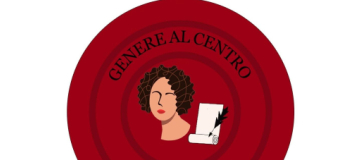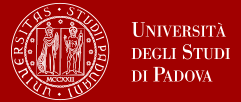
Climate Resilience and the Role of Five Indigenous Women
By Lucia Lupotti
With the beginning of 2024, we have entered the second year of the International Decade of Indigenous Languages 2022-2032, established by the Permanent Forum on Indigenous Issues to prevent the extinction of 50-90% of spoken languages that are spoken today. Estimates claim that this can happen by 2100. With the pressing issue of climate change in mind, it is very important we turn to our indigenous communities for knowledge in climate resilience.
The United Nations established the Permanent Forum on Indigenous Issues in July 2000. It is an advisory body to the Economic and Social Council and has the mandate to discuss indigenous issues related to economic and social development, culture, the environment, education, healthand human rights. The Forum calls for the constitutional and legal recognition of Indigenous languages, preservation and revitalization of Indigenous languages and the assurance of adequate funding for this, support for Indigenous universities, and ensuring that Indigenous languages are adequately included as one of the indicators to identify Indigenous persons when undertaking censuses. The protection of Indigenous languages means the protection of common cultural heritage.
As we battle the challenges of climate change, it is island states, coastal towns and indigenous communities who are likely to feel the changes the most, and for this reason, amongst others, it is critical that indigenous persons play a key role in climate resilience.
In this blog, five indigenous women climate activists will be highlighted and the work they have done for their communities and in the international scope. From Guatemala, Ecuador, Indonesia, Chad and the Philippines, these women have played an important role in climate resilience, advocacy, international recognition, empowerment, knowledge, climate justice, and protection of the environment. Their work has been spoken on by the UNDP Climate and Forest Blog. These mini-biographies will share a bit of insight on the work these women do and topics they advocate for.
1. Lola Cabnal, Maya Q’eqchí, Guatemala
Lola Cabnal is a Mayan Q’eqchí woman from a rural community in the municipality of Livingston, Guatemala. As the Chair of the Council of Indigenous Women and Biodiversity, and a climate advocacy strategist for Ak’ Tenamit Association, Cabnal works hard to push for climate justice. She educates others on the rights and knowledge of her own community. Furthermore, she is a member of The United Nations Collaborative Programme on Reducing Emissions from Deforestation and Forest Degradation in Developing Countries (UN-REDD Programme) and reinforces UN-REDD’s inclusive, gender-responsive, rights-based approach. Indigenous peoples and other forest-dependent communities are disproportionately impacted by climate injustices and are often left out of the political decision-making process, even though they are rights and knowledge holders.
2. Verónica Inmunda, Kichwa, Ecuador
Verónica Inmunda, a Kichwa woman from the Ecuadorian Amazon, is a law student focusing on the protection of Indigenous peoples’ rights and is a passionate advocate for the creation of a new model to integrate Indigenous knowledge and practices into the next generation’s educational awareness. She is the Youth, Culture and Sports Coordinator at CONFENIAE (Confederación de Nacionalidades Indígenas de la Amazonía Ecuatoriana). As one of the leaders of the Sacred Headwaters Initiative, she helps build a shared vision among Indigenous peoples, NGOs, philanthropic communities, social entrepreneurs and governments to protect regions in Peru and Ecuador from industrial-scale resource extraction. Their work is led by the Amazonian Indigenous federations CONFENIAE, AIDESEP (Peru), ORPIO and COICA, in partnership with Pachamama Alliance and Fundación Pachamama. The Amazon rainforest is being exploited for its oil and gas, as well as space for cattle ranching and soya farming.
Verónica shares a powerful statement relating symbols of peace, harmony, unity, and the rainforest. Of the initiative Verónica says: “For us, the Sacred Headwaters is a symbol of peace, a symbol of harmony, a symbol of unity, and above all, it is a symbol that we want our rainforest to remain intact in a hundred years and beyond.”
3. Rukka Sombolinggi, Toraja, Sulawesi, Indonesia
Rukka Sombolinggi, a Torajan woman from the highlands of Sulawesi, Indonesia, is the first female Secretary General of the Indigenous Peoples Alliance of the Archipelago (AMAN), the world’s largest national-level Indigenous peoples organization. For the past 30 years, Rukka and her family have endlessly advocated for Indonesian Indigenous rights. She is the new co-President of the Global Alliance for Territorial Communities, a worldwide network that unites some of the largest Indigenous associations working to protect forests and promote climate change solutions stemming from Indigenous traditional knowledge. As a member of the Regional Indigenous Peoples Programme at UN Development Programme’s Asia Pacific Regional Centre in Bangkok, Thailand, Rukka has been the voice of Indigenous communities across Malaysia, Philippines, Indonesia and Timor-Leste. As a regional leader, it is evident that her work has reached many communities.
4. Hindou Oumarou Ibrahim, Mbororo, Chad
Hindou, a Mbororo Indigenous pastoralist woman, is the founder of the Association of Indigenous Peul Women and Peoples of Chad (AFPAT), which is a community-based organization focused on promoting the rights of girls and women in the Mbororo community and inspiring leadership and advocacy in environmental protection. In 2016, Hindou represented civil society at the signing of the Paris Agreement on climate change. She is Co-chair of the Facilitative Working Group of the Local Communities and Indigenous Peoples Platform for the UN Convention on Climate Change, as well as a member of the United Nations Permanent Forum on Indigenous Issues, and a member of the Executive Committee for the Indigenous Peoples of Africa Coordinating Committee (IPACC).
In an event on carbon finance for the forest sector organized by the Forest Declaration Platform during the 21st session of the UN Permanent Forum on Indigenous Issues, Hindou said: “As Indigenous peoples, we know how to protect our forests. We know how to manage funding. You just have to respect the way we do it. We want to be partners, not recipients or beneficiaries.” Not only did her speech touch on the importance of traditional knowledge within indigenous communities and their histories, but it expressed the desire for cooperation, for a partnership that will protect our planet. Hindou continues to advocate for the critical importance of shifting climate finance directly to Indigenous communities. Her work sets an emphasis on the importance of traditional knowledge in building resilience of Indigenous and forest communities to face the climate crisis, protecting the survival of these communities and their environment.
5. Grace Balawag, Kankaney-Igorot, The Philippines
Grace, a Kankaney-Igorot Indigenous woman from the Philippines, is the deputy coordinator for the Climate Change Adaptation and Mitigation Program of the Tebtebba-Indigenous Peoples’ International Centre for Policy Research and Education. Additionally, she coordinates the Indigenous Peoples’ Partnership on Climate Change, Forests and Sustainable Development, called the Elatia Partnership, with 19 Indigenous peoples organizations in 14 countries in Asia, Africa and Latin America. The Elatia Partnership not only connects communities globally, but it also promotes workshops that help indigenous leaders and communities in advocating for climate justice.
Grace joined policy advocacy work for Indigenous peoples under Tebtebba at the global and regional levels, in relation to climate change, biodiversity, sustainable development and human rights, especially Indigenous peoples’ rights. She has also served as an Indigenous people’s representative to the UN-REDD Programme Policy Board, and is a member of the Facilitative Working Group of the Local Communities and Indigenous Peoples Platform (FWG-LCIPP) under the UN Framework Convention on Climate Change (UNFCCC).
What is The Indigenous Navigator?
The EU supports The Indigenous Navigator which is a framework and set of tools for and by indigenous peoples to systematically monitor the level of recognition and implementation of their rights. This platform serves as a database and knowledge base. Furthermore, it monitors the implementation of The UN Declaration on the Rights of Indigenous Peoples (UNDRIP), core human rights conventions as they pertain to indigenous peoples, essential aspects of the Sustainable Development Goals, and the outcomes of the World Conference on Indigenous Peoples.
The Indigenous Navigator serves as a tool and mechanism for indigenous communities to document the gaps in implementation of international standard protections they are facing. Other main goals of the Indigenous Navigator are to raise awareness on pressing issues and successes in indigenous communities, hold governments accountable, guide and orient indigenous peoples’ self-determined governance and development strategies, and serve as a reflection of universal human rights as they pertain to indigenous peoples.






